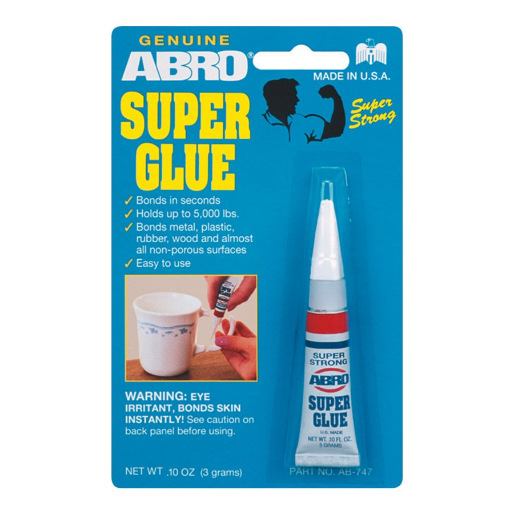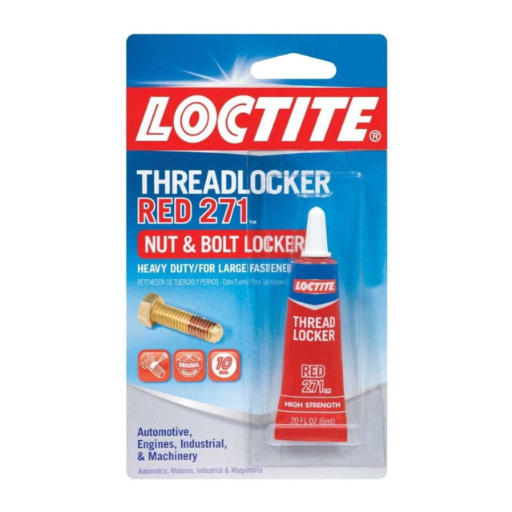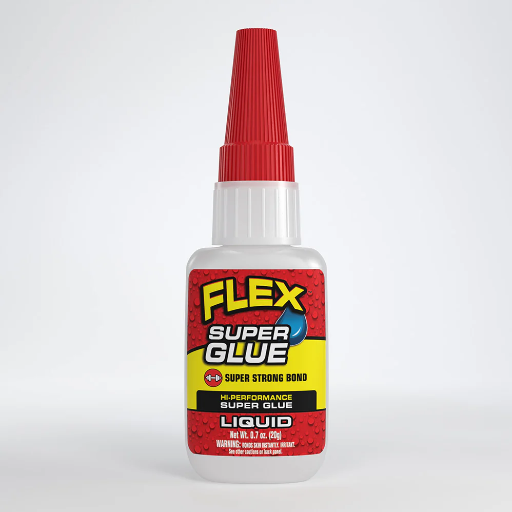The proper selection of an adhesive for your work depends on understanding its specific differences with the threadlocker and superglue. Both provide a very strong union; however, they have different functions and applications for which one may be better than the other. If you are fastening bolts in a high-vibration environment or placing materials down for a temporary bond, not having the right adhesive will probably be the failure of your work. This article is for you to understand the nature and benefits of threadlockers and super glues and learn the type of use best suited for them so that, on the basis of the requirements at hand, you make an educated decision. So let us go ahead and determine the best glue for your next project.
What is a Threadlocker?

Threadlocker is basically a type of glue to secure screws or bolts from loosening due to vibration, shock, or thermal expansion. It is usually applied to the liquid in gel state onto the fastener threads before assembly and cures into a strong and lasting bond. Threadlockers exist in various strengths, thus guiding users to pick the correct one for temporary removal or permanent disposition. Enhancing the risk of mechanical failure, threadlockers are mostly employed in automotive, industrial, and aerospace applications to secure fasteners.
How does a thread locker work?
Threadlocker inhibits loosening through a chemical reaction called anaerobic curing. When applied onto the threaded fastener and rendered devoid of atmospheric exposure upon rendering the fastener tight into place, hardening polymerization is set into motion through the absence of air and the presence of metal ions. This bond serves to secure and seal against corrosion and contamination, preventing loosening due to vibration or thermal expansion. Curing time is varied with respect to the formulation and environmental and material condition; high-performance ones even show resistance to extreme temperatures and chemical mounting.
What are the different types of threadlockers?
|
Threadlocker Type |
Key Features |
Typical Applications |
Temperature Resistance |
Strength Level |
Removability |
|---|---|---|---|---|---|
|
Low Strength |
Easy to remove with hand tools |
Small fasteners, adjustments |
Up to 300°F (150°C) |
Low |
Removable |
|
Medium Strength |
Balance of strength and removability |
Machine screws, bolts |
Up to 300°F (150°C) |
Moderate |
Hand tool removable |
|
High Strength |
Permanent locking, strong adhesive bond |
Heavy equipment, permanent fix |
Up to 450°F (232°C) |
High |
Difficult with heat |
|
Wicking Grade |
Penetrates pre-assembled fasteners |
Pre-assembled screws |
Up to 300°F (150°C) |
Medium |
Heat removal required |
|
Oil-Resistant |
Cures despite minor surface contamination |
Oily or unclean parts |
Up to 350°F (177°C) |
Varies by strength |
Depends on type |
|
High Temperature |
Engineered for extreme conditions |
Engines, exhaust systems |
Up to 650°F (343°C) |
High |
Heat required |
|
Chemical-Resistant |
Withstands exposure to harsh chemicals |
Industrial uses |
Up to 500°F (260°C) |
Varies by strength |
Difficult with tools |
When should you use a thread locker?
Threadlocker adhesives should be applied where vibrations, thermal expansions, or external forces are likely to press against and loosen or fatigue fastened joints. They are of particular concern in applications subjected to continuous motion, i.e., automotive, industrial machinery, and aerospace components. High-temperature chemical exposures and extreme temperature selections are suitable for threadlocker use as they form a sturdy bond while resisting incursion from heat or corrosive substances. The selection of the appropriate threadlocker will consider the level of strength, normal operating temperature, and surface conditions so as to deliver reliable performance and ensure application-critical requirements are met.
What is a Super Glue?

Super glue or cyanoacrylate is a fast-setting and high-strength adhesive that stains almost anything, including metal, plastic, ceramic, wood, etc. It works by reacting with moisture on the joining surfaces to almost instantly form an irreversibly strong and durable bond. Its quick curing time and versatility make it best suited for small repairs and precision applications. It is favored across households, industries, and medicine for being dependable and easy to use.
What are the main features of super glue?
- Rapid Bonding Time
The adhesive effect of super glue takes from 10-30 seconds to set almost instantaneously, depending on material and atmospheric conditions, which makes it perfect for time-sensitive repairs.
- Strong Adhesion
The strength of a glue bond can be as high as 4,000 psi, making it one of the most potent adhesives available so that materials joined under great stress.
- Versatility
It bonds to metal, wood, plastic, ceramic, and glass, rubber, and leather to name a few, thus allowing its application in an infinite number of settings.
- Moisture Activation
The glue engages polymerization with the trace moisture on surfaces, leading to the formation of a strong and permanent bond.
- Resistant to Environmental Factors
The adhesive remains uninterrupted by water, heat, and certain chemicals, allowing it to remain fabulous in magnificent environments.
Such characteristics make super glue a convenient and efficient adhesive suitable for both user repairs and specialized industrial applications.
How does super glue compare to threadlockers?
|
Parameter |
Super Glue |
Threadlockers |
|---|---|---|
|
Primary Use |
General bonding of surfaces |
Preventing loosening of threaded fasteners |
|
Composition |
Cyanoacrylate-based formula |
Anaerobic adhesive formula |
|
Curing Mechanism |
Moisture activation |
Absence of oxygen activation |
|
Strength |
High tensile and shear strength |
Resistant to vibration and loosening |
|
Viscosity |
Low to medium |
Available in varying viscosities |
|
Materials Compatible |
Metal, plastic, ceramic, wood |
Metals, some plastics |
|
Temperature Resistance |
Moderate (up to ~200°F/93°C) |
High (up to ~300°F/149°C, varies by grade) |
|
Chemical Resistance |
Limited to certain chemicals |
Resistant to many industrial fluids |
|
Reusability |
Difficult to detach without damage |
Allows controlled disassembly with tools |
|
Application |
Ideal for small, non-moving surfaces |
Effective on threaded fasteners |
|
Durability |
Long-lasting when stress is minimal |
Maintains bond under dynamic conditions |
What materials can you use super glue on?
Also called cyanoacrylate, super glue is the most versatile adhesive and bonds well with many materials. It works best, particularly on non-porous surfaces like metal, plastics, and ceramics that have been kept clean; after just a few seconds of application, it forms a very strong, lasting bond. Some specifications of super glue may be required to help the bond adhere properly to porous materials like wood, fabric, or leather. Other than glass or rubber, the surface must first be cleaned and dried for super glue applications to achieve maximum bond strength. Its versatility has made it quite a popular product with other applications, so selecting the right kind of super glue and applying it with proper technique is essential for getting the best performance.
Threadlocker vs Super Glue: Which is Better?

It all depends on what it is being used for, the deciding factor between whether threadlocker or super glue would best serve the situation. Threadlocker is meant to keep threaded fasteners locked and prevents loosening that comes with vibration or movement. It cures when air is absent between metal surfaces and can be taken apart with the aid of tools, if required.
Super glue acts faster as an adhesive; it bonds various materials and forms a bond that cannot have enough flexibility or strength for threaded connections, especially under stress.
What are the advantages of using super glue?
- Rapid Bonding Time
Super glue cures within seconds as moisture in the air is absorbed, making it suitable for quick assembly and repair tasks. The rapid action makes it the perfect candidate for time-sensitive applications.
- Strong Adhesion
Offer the bond on many substrates, including plastic, metal, ceramic, glass, rubber, and wood. Where optimum circumstances are found, superglue, depending on the formulation, can have ultimate tensile strengths of between 1,000 and 5,000 psi.
- Versatility
Since this super glue bonds well to dissimilar material types, it finds application in automotive, medical, electronics, etc.
- Precision Application
Most super glue products are designed with precision applicators that allow for controlled dispensing in intricate assembly processes or fine repair work.
- Temperature and Chemical Resistance
Modern formulations of super glue can sustain a temperature of 180°F (82°C) and, besides normal mechanical action, provide moderate resistance to water, solvent, and chemicals, suggesting the usefulness of its applications in harsher conditions.
In which situations should you choose one over the other?
The choice depends on specific considerations of performance requirements and environmental conditions between super glue (cyanoacrylate) and an epoxy, for example. Super glue is useful for applications requiring from fast-set, high-strength bonding for small surfaces, especially onto non-porous materials such as plastics, ceramics, or metals. Light repairs are particularly suited for the glue if there is little stress or movement after bonding.
For the opposite case, epoxy should be the adhesives of choice for bigger dimensions, structural applications requiring more strength, gap filling, and high resistance against harsh environments. Epoxies are sought for applications where the long-term durability of bonded joints is paramount under high stress, wide temperature, water, or chemical exposure. For example: epoxy is applied in construction, automotive repair, and marine due to its strength and willingness to diversify to almost all interfaces and environments. Guarantees the optimum adhesive is chosen for the job after a proper evaluation of bonding requirements and environmental criteria.
How to Use Threadlockers Effectively?

- Prepare the Surface – If you are to use a threadlocker, make sure that the threads are clean and dry. A cleaner could remove any dirt, grease, or oil before application. Isopropyl alcohol is a good example.
- Apply the Threadlocker – Apply a small amount of threadlocker on the threads of the fastener. For through holes, apply it to the bolt. For blind holes, apply to the interior threads of the hole.
- Assemble the Parts – Thread the fastener into place while the threadlocker is still wet, then tighten to recommended torque specifications.
- Allow Proper Curing – Once assembled, let the threadlocker cure. Cure times vary from time to time according to product and temperature conditions, so the manufacturer’s instructions should be followed.
- Use the Right Grade – Consider what will be needed in application when choosing the correct grade of threadlocker (e.g., low, medium, or high). Will you want to disassemble the joint in the future? If so, use a lower strength.
What is the proper application method for thread lockers?
In preparing to apply the threadlocker, first prepare the threaded components for maximal adhesion and function. Clean and degrease thoroughly the bolt and nut surfaces to eliminate any oil, dirt, or other contaminants. Once clean and dry, apply the threadlocker along the threads of the male fastener evenly. Be sure to cover only the engagement area that will be in full contact with the female threads to avoid excessive application that could cause the threadlocker to be squeezed out during assembly.
Immediately after applying threadlocker, assemble the parts so that the sheet can be distributed evenly along the engaged threads. Next, tighten the assembly to the specified torque value according to engineering standards or equipment manufacturer’s recommendations. Then allow the threadlocker to cure for the full time stated on the product, which will vary depending on temperature, humidity, and the compatibility of bonded materials. In the case of anaerobic threadlockers, curing will occur as the adhesive is confined between metal parts while blocked from exposure to air. Following these procedures will ensure that the parts are securely bonded in a way resistant to vibration and thus more reliable in arduous mechanical environments.
How long does it take for threadlocker to cure?
Can You Use Super Glue Instead of Threadlocker?

No, super glue cannot replace threadlocker to keep threaded fasteners secured effectively. Both are types of adhesives, but they serve quite different functions. Threadlocker is especially designed for dependable bonds in high-vibration environments where, with time, loosening would occur, while super glue remains a general adhesive not up to the sudden dynamic stresses of threaded connections. Using super glue instead of a threadlocker may not yield sufficient results and could eventually lead to failure of the assembly. Always use the right product as per the specification for your application.
What are the limitations of using super glue as a thread lock?
Super glue, while a strong adhesive, has some significant drawbacks when used as a thread lock. Firstly, it does not have the elasticity or flexibility required to resist continuous vibrations and dynamic loads experienced by threaded assemblies. Unlike purpose-built threadlockers, super glue turns grotesquely brittle as time passes, making the bonding prone to fractures and failures under mechanical stress. Secondly, the chemical behavior of super glue does not provide resistance against oils, corrosion, or high temperatures, typically encountered in industrial and mechanical arenas. This leads to the degradation of adhesives over time, compromising the assembly’s integrity. In addition to this, super glue does not share the controlled bonding strength of threadlockers, thereby complicating the process of component disassembly without damage. Therefore, it cannot earn trust as a viable alternative to a dedicated thread locking solution.
Are there scenarios where super glue might work better?
Reference Sources
-
Study on Engagement Ratio and Threadlockers: This research focused on the effect of the Engagement Ratio (ER) on the performance of medium-strength threadlockers (Loctite 243). It found that threadlockers reduce friction during tightening but their lubrication effect diminishes as ER increases.
-
Tribological Response of Threaded Fasteners: This study examined the impact of medium and high-strength threadlockers on the tribological behavior of threaded fasteners. It highlighted how tightening procedures influence the adhesive’s effectiveness in preventing self-loosening.
Frequently Asked Questions (FAQs)
Q: What is the difference between threadlocker and super glue?
A: Threadlocker, such as Loctite, is specifically designed for fasteners and provides a strong bond that can withstand heavy vibration and torque. Super glue is a general adhesive that creates a strong bond but may not be suitable for applications involving moving parts or heavy loads.
Q: Can I use Loctite on car parts?
A: Yes, you can use Loctite on car parts to secure fasteners. It is particularly effective in preventing bolts from vibrating loose, making it ideal for automotive applications.
Q: How do I undo Loctite once it has cured?
A: To undo Loctite, you can apply heat to the bonded area, as heat exposure can weaken the bond. Using a torque wrench may also help in loosening the fastener if it’s safe to do so.
Q: What type of Loctite should I use for permanent thread applications?
A: For permanent thread applications, you should use Loctite Red, which is designed for high-strength applications where disassembly is not required. For applications where you might need to undo the fastener later, consider using Blue Loctite.
Q: Can super glue be used instead of Loctite for fasteners?
A: While super glue can create a strong bond, it is not recommended for fasteners subjected to heavy vibration or torque. Loctite is specifically formulated to handle these conditions better than super glue.
Q: Does Gorilla Glue work well on fasteners?
A: Gorilla Glue is a strong adhesive, but it is not ideal for fasteners. It expands as it cures and may not provide the same level of precision and strength under torque as Loctite or other threadlockers.
Q: How should I prepare surfaces before applying Loctite?
A: Always clean the surfaces to be bonded before applying Loctite. This ensures better adhesion and effectiveness of the threadlock. Remove any grease, dirt, or old adhesive to achieve the best results.
Q: Can Loctite withstand heat exposure?
A: Yes, some Loctite products are designed to withstand heat exposure. However, it’s important to choose the correct formulation for your specific application, as not all Loctite products have the same heat tolerance.
Q: What happens if a fastener comes loose despite using Loctite?
A: If a fastener comes loose despite using Loctite, it could be due to insufficient application, incorrect product choice, or extreme conditions such as heavy vibration that exceed the product’s tolerance. Always ensure you are using the right type of Loctite for your specific needs.



















